Pyridoxal phosphate
Modify Date: 2024-01-02 08:28:20

Pyridoxal phosphate structure
|
Common Name | Pyridoxal phosphate | ||
|---|---|---|---|---|
| CAS Number | 54-47-7 | Molecular Weight | 247.142 | |
| Density | 1.6±0.1 g/cm3 | Boiling Point | 565.7±60.0 °C at 760 mmHg | |
| Molecular Formula | C8H10NO6P | Melting Point | 140-143ºC | |
| MSDS | N/A | Flash Point | 296.0±32.9 °C | |
Use of Pyridoxal phosphatePyridoxal phosphate is the active form of vitamin B6, acts as an inhibitor of reverse transcriptases, and is used for the treatment of tardive dyskinesia. |
| Name | pyridoxal 5'-phosphate |
|---|---|
| Synonym | More Synonyms |
| Description | Pyridoxal phosphate is the active form of vitamin B6, acts as an inhibitor of reverse transcriptases, and is used for the treatment of tardive dyskinesia. |
|---|---|
| Related Catalog | |
| Target |
Human Endogenous Metabolite |
| In Vitro | Pyridoxal 5′-phosphate severely inhibits the DNA Polymerase and RNase H. Pyridoxal phosphate results in an imnediate reduction in the rate of DNA synthesis[1]. Conjugation to pyridoxal phosphate fully inhibits NEIL2. Pyridoxal phosphate-conjugated NEIL2 shows much lower activity than the intact enzyme over a wide range of enzyme/substrate ratios. After Pyridoxal phosphate conjugation, the ability of NEIL2 to bind the THF-ligand is completely lost[2]. |
| References |
| Density | 1.6±0.1 g/cm3 |
|---|---|
| Boiling Point | 565.7±60.0 °C at 760 mmHg |
| Melting Point | 140-143ºC |
| Molecular Formula | C8H10NO6P |
| Molecular Weight | 247.142 |
| Flash Point | 296.0±32.9 °C |
| Exact Mass | 247.024567 |
| PSA | 126.76000 |
| LogP | -0.52 |
| Vapour Pressure | 0.0±1.6 mmHg at 25°C |
| Index of Refraction | 1.641 |
| Storage condition | −20°C |
Synonym:3-Hydroxy-2-Methyl-5-(Phosphonoxy)-4-Pyridinecarboxaldehyde; 1-Iodohexadecane Section 2 - COMPOSITION, INFORMATION ON INGREDIENTS
Risk Phrases: None Listed. Section 3 - HAZARDS IDENTIFICATION EMERGENCY OVERVIEW
Light sensitive. Potential Health Effects Eye: May cause eye irritation. Skin: May cause skin irritation. Ingestion: May cause irritation of the digestive tract. Low hazard for usual industrial handling. Inhalation: May cause respiratory tract irritation. Low hazard for usual industrial handling. Chronic: None Section 4 - FIRST AID MEASURES Eyes: Flush eyes with plenty of water for at least 15 minutes, occasionally lifting the upper and lower eyelids. If irritation develops, get medical aid. Skin: Flush skin with plenty of water for at least 15 minutes while removing contaminated clothing and shoes. Get medical aid if irritation develops or persists. Wash clothing before reuse. Ingestion: Never give anything by mouth to an unconscious person. Do NOT induce vomiting. If conscious and alert, rinse mouth and drink 2-4 cupfuls of milk or water. Get medical aid if irritation or symptoms occur. Inhalation: Remove from exposure and move to fresh air immediately. If not breathing, give artificial respiration. If breathing is difficult, give oxygen. Get medical aid if cough or other symptoms appear. Notes to Physician: Section 5 - FIRE FIGHTING MEASURES General Information: As in any fire, wear a self-contained breathing apparatus in pressure-demand, MSHA/NIOSH (approved or equivalent), and full protective gear. During a fire, irritating and highly toxic gases may be generated by thermal decomposition or combustion. Extinguishing Media: Use agent most appropriate to extinguish fire. Use water spray, dry chemical, carbon dioxide, or appropriate foam. Section 6 - ACCIDENTAL RELEASE MEASURES General Information: Use proper personal protective equipment as indicated in Section 8. Spills/Leaks: Vacuum or sweep up material and place into a suitable disposal container. Clean up spills immediately, observing precautions in the Protective Equipment section. Avoid generating dusty conditions. Provide ventilation. Section 7 - HANDLING and STORAGE Handling: Wash thoroughly after handling. Remove contaminated clothing and wash before reuse. Use with adequate ventilation. Minimize dust generation and accumulation. Avoid contact with eyes, skin, and clothing. Keep container tightly closed. Avoid ingestion and inhalation. Store protected from light. Storage: Store in a tightly closed container. Store in a cool, dry, well-ventilated area away from incompatible substances. No special precautions indicated. Store protected from light. Section 8 - EXPOSURE CONTROLS, PERSONAL PROTECTION Engineering Controls: Use adequate ventilation to keep airborne concentrations low. Exposure Limits CAS# 54-47-7: Personal Protective Equipment Eyes: Wear appropriate protective eyeglasses or chemical safety goggles as described by OSHA's eye and face protection regulations in 29 CFR 1910.133 or European Standard EN166. Skin: Wear appropriate protective gloves to prevent skin exposure. Clothing: Wear appropriate protective clothing to prevent skin exposure. Respirators: Follow the OSHA respirator regulations found in 29 CFR 1910.134 or European Standard EN 149. Use a NIOSH/MSHA or European Standard EN 149 approved respirator if exposure limits are exceeded or if irritation or other symptoms are experienced. Section 9 - PHYSICAL AND CHEMICAL PROPERTIES Physical State: Powder Color: light yellow Odor: Not available. pH: Not available. Vapor Pressure: Not available. Viscosity: Not available. Boiling Point: Not available. Freezing/Melting Point: Not available. Autoignition Temperature: Not available. Flash Point: Not available. Explosion Limits, lower: Not available. Explosion Limits, upper: Not available. Decomposition Temperature: Solubility in water: Specific Gravity/Density: Molecular Formula: C8H10NO6P Molecular Weight: 247.14 Section 10 - STABILITY AND REACTIVITY Chemical Stability: Stable under normal temperatures and pressures. Conditions to Avoid: Incompatible materials, light, dust generation, excess heat, strong oxidants. Incompatibilities with Other Materials: Strong oxidizing agents. Hazardous Decomposition Products: Carbon monoxide, oxides of nitrogen, irritating and toxic fumes and gases, carbon dioxide, oxides of potassium. Hazardous Polymerization: Has not been reported Section 11 - TOXICOLOGICAL INFORMATION RTECS#: CAS# 54-47-7: UV1207000 LD50/LC50: CAS# 54-47-7: Oral, mouse: LD50 = 4640 mg/kg; Oral, rat: LD50 = 5900 mg/kg. Carcinogenicity: 4-Pyridinecarboxaldehyde,3-Hydroxy-2-Methyl-5-(Phosphonooxy) - Not listed by ACGIH, IARC, or NTP. Other: See actual entry in RTECS for complete information. Section 12 - ECOLOGICAL INFORMATION Section 13 - DISPOSAL CONSIDERATIONS Dispose of in a manner consistent with federal, state, and local regulations. Section 14 - TRANSPORT INFORMATION IATA Not regulated as a hazardous material. IMO Not regulated as a hazardous material. RID/ADR Not regulated as a hazardous material. Section 15 - REGULATORY INFORMATION European/International Regulations European Labeling in Accordance with EC Directives Hazard Symbols: Not available. Risk Phrases: Safety Phrases: S 24/25 Avoid contact with skin and eyes. S 28A After contact with skin, wash immediately with plenty of water. S 37 Wear suitable gloves. S 45 In case of accident or if you feel unwell, seek medical advice immediately (show the label where possible). WGK (Water Danger/Protection) CAS# 54-47-7: 1 Canada CAS# 54-47-7 is listed on Canada's DSL List. CAS# 54-47-7 is not listed on Canada's Ingredient Disclosure List. US FEDERAL TSCA CAS# 54-47-7 is listed on the TSCA inventory. SECTION 16 - ADDITIONAL INFORMATION N/A |
CHEMICAL IDENTIFICATION
HEALTH HAZARD DATAACUTE TOXICITY DATA
MUTATION DATA
|
| Safety Phrases | 22-24/25 |
|---|---|
| WGK Germany | 3 |
| HS Code | 2936250000 |
| Precursor 8 | |
|---|---|
| DownStream 10 | |
| HS Code | 2933399090 |
|---|---|
| Summary | 2933399090. other compounds containing an unfused pyridine ring (whether or not hydrogenated) in the structure. VAT:17.0%. Tax rebate rate:13.0%. . MFN tariff:6.5%. General tariff:20.0% |
| Pyridoxal-5-monophosphate |
| (4-Formyl-5-hydroxy-6-methyl-3-pyridinyl)methyl dihydrogen phosphate |
| Phosphate, Pyridoxal |
| (4-Formyl-5-hydroxy-6-methylpyridin-3-yl)methyl dihydrogen phosphate |
| (4-Formyl-5-hydroxy-6-methyl-3-pyridinyl)methyldihydrogen-phosphat |
| Aderoxal |
| EINECS 200-208-3 |
| Pyridoxal phosphate (6CI) |
| (4-Formyl-5-hydroxy-6-methylpyridin-3-yl)methyldihydrogen-phosphat |
| Vitamin B6 phosphate |
| Pyridoxal 5-phosphate |
| Pyridoxal phosphate |
| MFCD00006333 |
| 4-Pyridinecarboxaldehyde, 3-hydroxy-2-methyl-5-[ (phosphonooxy)methyl]- |
| Pyridoxyl phosphate |
| Pyridoxal 5'-phosphic acid |
| Isonicotinaldehyde, 3-hydroxy-5-(hydroxymethyl)-2-methyl-, 5-(dihydrogen phosphate) |
| 4-Pyridinecarboxaldehyde, 3-hydroxy-2-methyl-5-[(phosphonooxy)methyl]- |
| 3-Hydroxy-2-methyl-5-[(phosphonooxy)methyl]-4-pyridinecarboxaldehyde |
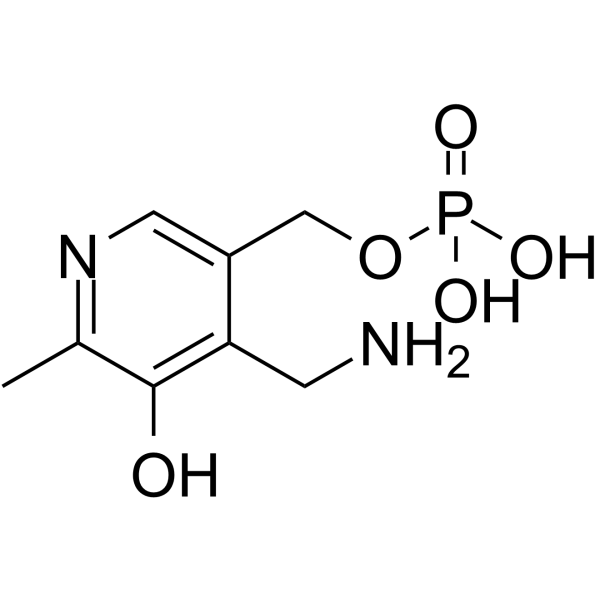 CAS#:529-96-4
CAS#:529-96-4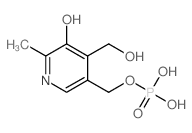 CAS#:447-05-2
CAS#:447-05-2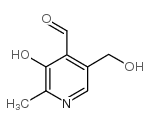 CAS#:66-72-8
CAS#:66-72-8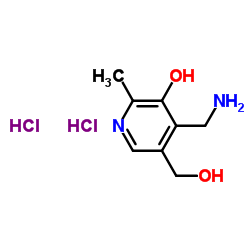 CAS#:524-36-7
CAS#:524-36-7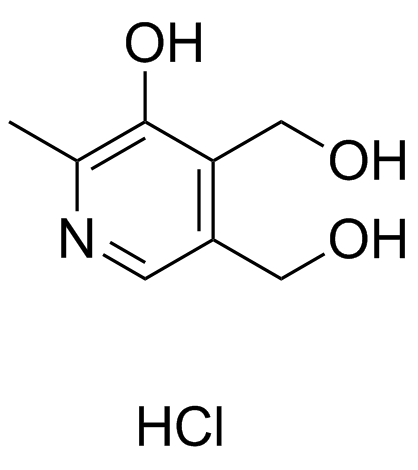 CAS#:58-56-0
CAS#:58-56-0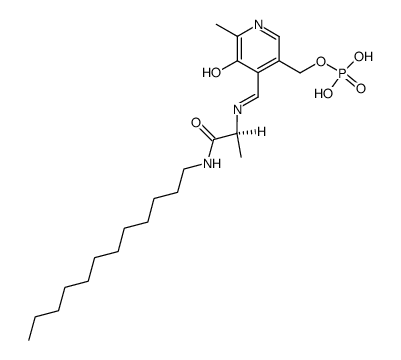 CAS#:83825-03-0
CAS#:83825-03-0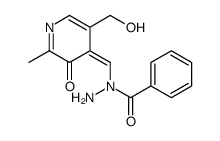 CAS#:72343-06-7
CAS#:72343-06-7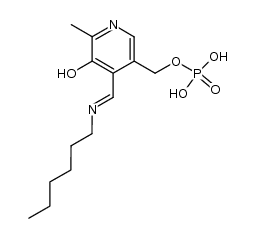 CAS#:10524-83-1
CAS#:10524-83-1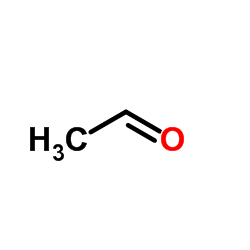 CAS#:75-07-0
CAS#:75-07-0 CAS#:127-17-3
CAS#:127-17-3 CAS#:7783-06-4
CAS#:7783-06-4 CAS#:7664-41-7
CAS#:7664-41-7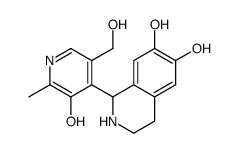 CAS#:36120-58-8
CAS#:36120-58-8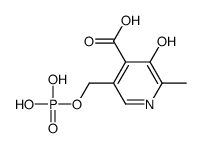 CAS#:954-27-8
CAS#:954-27-8![bis-(3-hydroxy-2-methyl-5-phosphonooximethyl-[4]pyridyl)-ethanedione structure](https://image.chemsrc.com/caspic/490/412026-04-1.png) CAS#:412026-04-1
CAS#:412026-04-1 CAS#:5913-68-8
CAS#:5913-68-8
